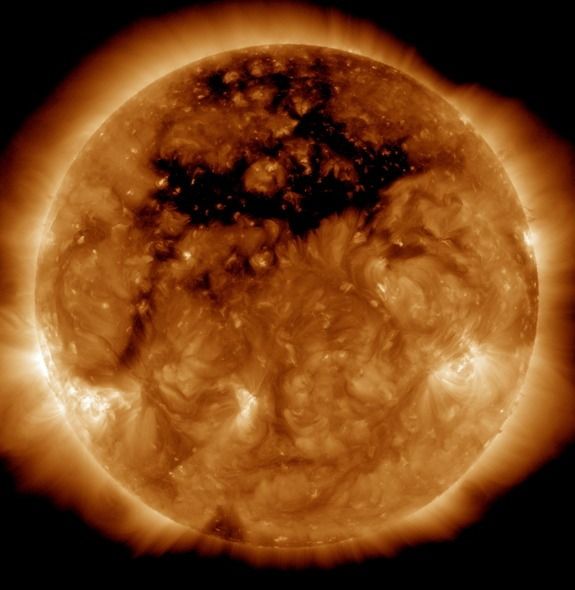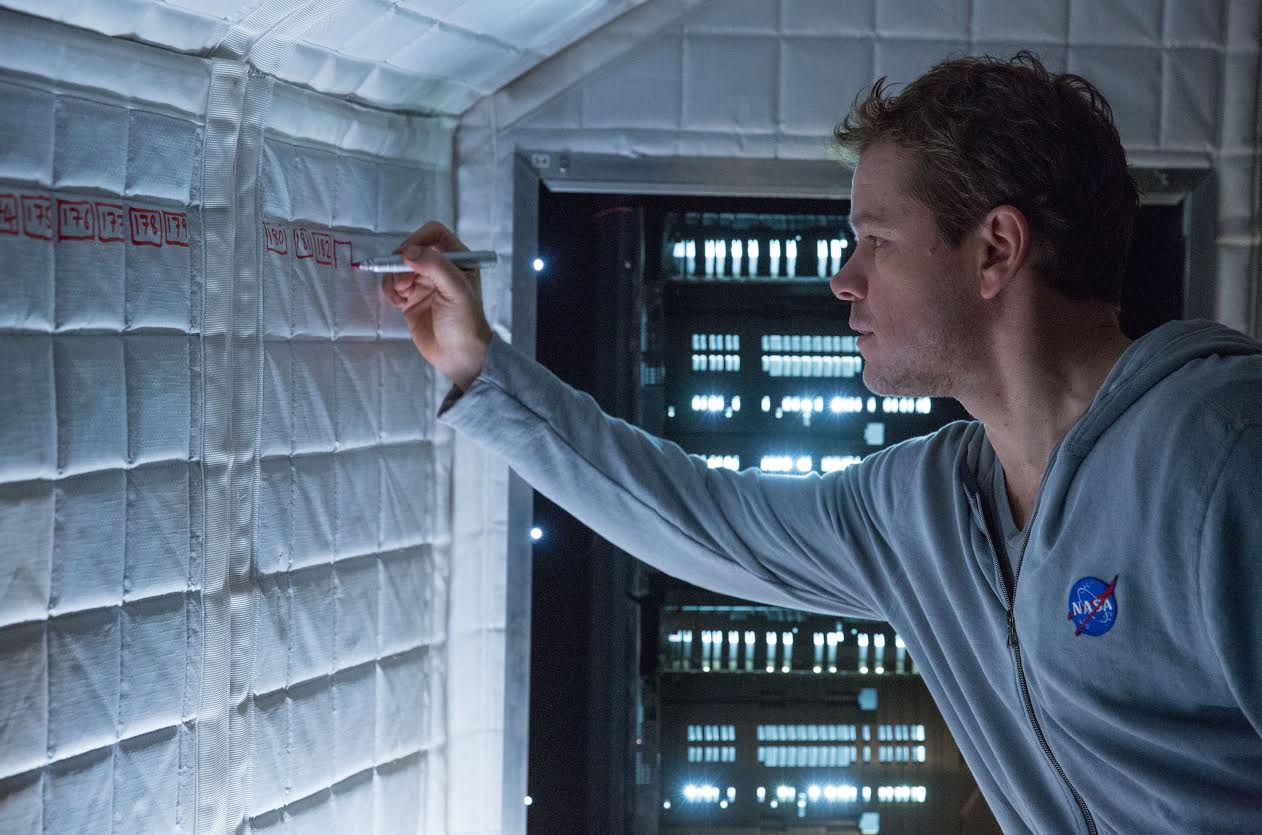I know that solar flares and CME’s aren’t an existential threat to humanity (as long as we’ve got our geomagnetic shield in place, of course), but having seen the movie Knowing I can’t help but feel at least a small and totally irrational bit terrified. And not by Nicolas Cage’s hair, either! (although it does come in a close second wink )
The sun has sprung a leak: A hole in the topmost layer of the sun and its magnetic field, the size of 50 Earths, is letting loose an ultrafast solar wind that has kicked off several nights of auroras down on Earth.
A new image, from NASA’s orbiting Solar Dynamics Observatory, reveals the enormous hole as it was Oct. 10, taken at an ultraviolet wavelength unseen by the human eye. To an ordinary observer, the gaping hole would be invisible, though you should NEVER stare at the sun because serious eye damage can result.
The gap in the sun’s magnetic field lets out a stream of particles traveling at up to 500 miles (800 kilometers) per second, kindling a days-long geomagnetic storm upon hitting Earth. [Biggest Solar Storms of 2015 in Photos].








